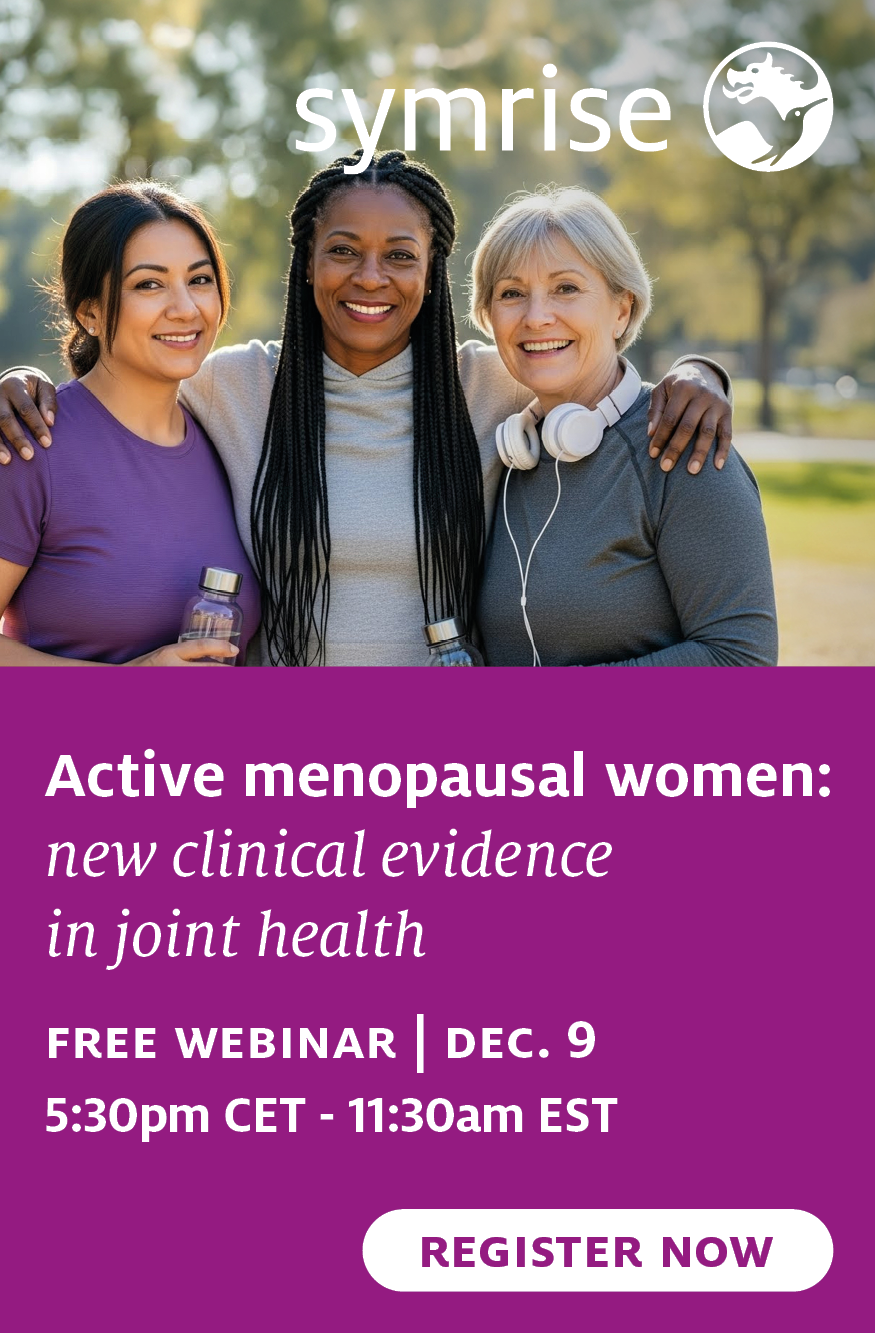Prenatal nutrition should address the needs of the modern parent, industry experts highlight

Expectant mothers are increasingly older, better educated and more affluent, highlight experts in the nutrition field. These trends have resulted in increased awareness of and interest in prenatal nutrition. We sit down with industry stakeholders representing Balchem Human Nutrition & Health, dsm-firmenich, Kaneka Nutrients Europe and Gnosis by Lesaffre to discuss this growing category.
“As the market for prenatal health supplements steadily grows, products that support the brain health of developing babies are proving popular,” Lauren Eisen, senior marketing and business development manager for minerals and nutrients at Balchem Human Nutrition & Health, tells Nutrition Insight.
“Data from Innova Market Insights shows that in supplements for pregnancy, brain-mood health is the top claim, followed by immune health and energy. With this in mind, we expect that ingredients like choline and folate will continue to be an important tool for manufacturers looking to tap into this trend.”

Julia Duchastel, dsm-firmenich early life nutrition segment lead for North America, comments: “These are exciting times for women’s health research. While there has historically been a lack of scientific knowledge and research in women’s health, the research community is now responding with increased focus and support from initiatives like the White House Initiative on Women’s Health Research.”
'Choline-enriched folate for prenatal health
Balchem’s Eisen explains that choline supplementation during pregnancy and lactation has been shown to support fetal brain development, as well as cognitive function in babies after birth.
 Adequate folate in healthful diets may reduce the risk of having a child with a brain or spinal cord birth defect.“Choline intake through supplementation often does not meet recommended levels. Folate, or vitamin B9, also plays a role in transporting CH3 molecules or methyl groups in a process called ‘one-carbon metabolism.’ This simple job is incredibly important and is a major reason why adequate folate in healthy diets may reduce a woman’s risk of having a child with a brain or spinal cord birth defect.”
Adequate folate in healthful diets may reduce the risk of having a child with a brain or spinal cord birth defect.“Choline intake through supplementation often does not meet recommended levels. Folate, or vitamin B9, also plays a role in transporting CH3 molecules or methyl groups in a process called ‘one-carbon metabolism.’ This simple job is incredibly important and is a major reason why adequate folate in healthy diets may reduce a woman’s risk of having a child with a brain or spinal cord birth defect.”
She points out that 52% of pregnant women in the US do not get enough folate from their diets alone. “Including choline and folate in innovative products for pregnancy could help address this nutritional gap for mothers looking to support their babies’ brain health.”
Balchem’s new bioactive choline-enriched folate ingredient, Optifolin+, aims to fill this gap.
“Unlike folic acid, Optifolin+ is readily available for transport and use in the human body and tissues, with fewer metabolic roadblocks and no need for conversion.”
“The addition of choline allows Optifolin+ to provide seven times the methyl groups found in other folate products, with 98% active methylating nutrients. This, in turn, promotes balanced and effective methylation within the body, a vital process for the formation of DNA and proper cell division, uniquely positioning Optifolin+ to support healthy fetal development.”
VitaCholine can provide health benefits to both the mother and the fetus. “It is the most well-researched form of choline and has been shown to deliver lasting cognitive health benefits for babies — observed as early as the first year of life and still present at age seven.”
Omega-3 significance
Duchastel, a dsm-firmenich expert, argues that one of the most pressing challenges facing maternal health in the US is the preterm birth rate, which she says has been on the rise since 2014. “Despite its advanced healthcare system, the US reports that one in ten babies is born prematurely — one of the highest rates among developed nations.”
“This is unacceptable, especially since there are science-backed solutions that can help. A landmark 2018 Cochrane review demonstrated that omega-3 supplementation could reduce preterm births (<37 weeks gestation) by 11% and early preterm births (< 34 weeks gestation) by 42%. Building on this evidence, new clinical guidelines published in February 2024 now provide specific recommended intake levels.”
“These guidelines recommend that women of childbearing age should consume a minimum of 250 mg per day of DHA and EPA. During pregnancy, this increases to 350–450 mg per day. For pregnant women who begin pregnancy with low omega-3 status or intake, the guidelines recommend higher doses of 600–1000 mg per day of DHA and EPA, or DHA alone, starting at least before the second trimester.”
 Women of childbearing age should consume a minimum of 250 mg per day of DHA and EPA.She explains that given the significant impact of preterm and early preterm birth on both mothers and infants, raising awareness of these new guidelines among healthcare professionals and manufacturers is crucial. “Omega-3 DHA supplementation could become the next major public health intervention in maternal care. The opportunity to make such a significant difference in maternal and infant health remains largely untapped.”
Women of childbearing age should consume a minimum of 250 mg per day of DHA and EPA.She explains that given the significant impact of preterm and early preterm birth on both mothers and infants, raising awareness of these new guidelines among healthcare professionals and manufacturers is crucial. “Omega-3 DHA supplementation could become the next major public health intervention in maternal care. The opportunity to make such a significant difference in maternal and infant health remains largely untapped.”
Technology can play a crucial role in advancing maternal nutrition solutions to meet consumer demand, and the company is striving to develop innovative algal omega-3s.
These include oils with EPA to DHA ratios that mimic fish oils to allow customers to create a more convenient and smaller product with the same omega-3 content. “Our latest advancement, Life’s Omega B54-0100, represents our most potent natural triglyceride oil, containing over 50% DHA,” says Duchastel.
“This highly concentrated formulation enables smaller serving sizes while maintaining superior taste — particularly beneficial for pregnant women who may require higher DHA doses based on their initial status. Additionally, our algal-derived DHA offers a sustainable alternative to fish oil, providing peace of mind for women who are planning pregnancy, currently pregnant or breastfeeding.”
Ubiquinol
Filip Van hulle, general manager at Kaneka Nutrients Europe, tells us that the biologically active form of coenzyme Q10, ubiquinol, plays a vital role in reproductive health through its fundamental impact on cellular energy production. It can be crucial for supporting conception and early embryonic development, significantly enhancing fertility potential.
“The reproductive process is extraordinarily energy-intensive: mature egg cells contain approximately 100,000 mitochondria compared to just 1,000–2,500 in typical body cells. The high concentration of cellular powerhouses influences egg quality, conception potential and embryo development, with high ubiquinol levels being particularly crucial during early embryonic development when giant mitochondria are created to meet the intense energy demands of new life,” Van hulle continues.
 Declining fertility rates and later family planning are helping to grow the fertility supplement market.“Research demonstrates how Kaneka Ubiquinol comprehensively supports fertility and prenatal health: it enhances mitochondrial denosine triphosphate generation and normalizes reproductive hormone levels, showing increases of up to 300% in crucial fertility hormones, as well as providing antioxidant protection for both egg and sperm cells.”
Declining fertility rates and later family planning are helping to grow the fertility supplement market.“Research demonstrates how Kaneka Ubiquinol comprehensively supports fertility and prenatal health: it enhances mitochondrial denosine triphosphate generation and normalizes reproductive hormone levels, showing increases of up to 300% in crucial fertility hormones, as well as providing antioxidant protection for both egg and sperm cells.”
He adds that in male fertility studies, Ubiquinol supplementation significantly improved sperm parameters, including density and motility, while IVF studies have shown supplementation with Ubiquinol and omega-3 can increase pregnancy rates from 33% to nearly 50%.
“With declining fertility rates and later family planning becoming increasingly common, the fertility supplement market is poised for remarkable growth,” Van hulle continues.
“North America, which holds the highest share in the prenatal vitamin supplements market, has seen a marked shift in the parental demographic — with a decrease in the rate of teen pregnancy and a rise in the share of births by more affluent and educated women. This new demographic is expected to drive further market growth.”
Nutritionally active folate
The demand for folate increases when human cell growth is highly active, such as in pregnancy and lactation. Silvia Pisoni, Gnosis by Lesaffre’s global market manager, tells us studies have found that low dietary intake of folate increases the risk of delivering a baby with several types of congenital disabilities, particularly neural tube defects, among other complications for both mother and child.
“Quatrefolic is the glucosamine salt of f (6S)-5-methyltetrahydrofolate (5-MTHF) — patented by Gnosis by Lesaffre. Research suggests that Quatrefolic can provide the nutritionally active form of folate during preconception, pregnancy and lactation.”
“Pregnant women who supplemented with Quatrefolic through the 24th week of pregnancy exhibited higher levels of the active 5-MTHF in their blood than the same dose of folic acid. This study also confirmed the importance of folate supplementation to avoid developing neural tube defects.”
She explains that as women know they need vitamin B9 during pregnancy (the US FDA recommends pregnant women consume 600 mcg daily and 500 mcg when breastfeeding), many are not yet aware that they may carry a genetic mutation known as MTHFR polymorphism that significantly decreases assimilation and metabolization of the folic acid form of vitamin B9.
“Quatrefolic bypasses the conversion step of folic acid to the active form, 5-MTHF, making it the better choice for those with the MTHFR polymorphism.”
 The demand for folate increases when human cell growth is highly active, such as in pregnancy and lactation.Pisoni explains that another way 5-MTHF promotes a healthy pregnancy is through supporting healthy homocysteine levels. “High homocysteine levels cause disturbance of maternal and fetal homocysteine metabolism. This metabolism disturbance, coupled with inadequate levels of active folate in the bloodstream, is associated with significant complications, such as fetal neural tube defects, pre-eclampsia and placental abruption and recurrent pregnancy loss.”
The demand for folate increases when human cell growth is highly active, such as in pregnancy and lactation.Pisoni explains that another way 5-MTHF promotes a healthy pregnancy is through supporting healthy homocysteine levels. “High homocysteine levels cause disturbance of maternal and fetal homocysteine metabolism. This metabolism disturbance, coupled with inadequate levels of active folate in the bloodstream, is associated with significant complications, such as fetal neural tube defects, pre-eclampsia and placental abruption and recurrent pregnancy loss.”
When a blood test confirms high homocysteine levels in women with the MTHFR polymorphism, they are often tested to identify the type of MTHFR mutation — the more common 677CT heterozygous or 677TT homozygous.
“This test is important because research demonstrates that women with 677TT homozygous MTHFR polymorphism have significantly lower folate levels than heterozygous, and they also exhibit much higher homocysteine concentrations — which is more pronounced in women with low folate intake,” says Pisoni.
“Folate, in concert with other B vitamins, may help pregnant women manage their homocysteine levels. In one study, two months of daily supplementation with 5-MTHF combined with vitamins B6 and B12 was more effective in reducing homocysteine blood levels compared to folic acid.”












